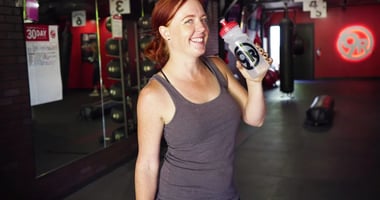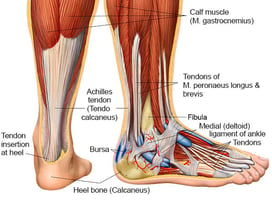Hey there, champions! Are you ready to dive headfirst into the world of kickboxing and unleash your...
Decoding 9Round: Understanding Short Hand for Movements
Unravel the mystery behind the short codes used for movements in a 9Round session with this detailed explanation and table breakdown.
Unveiling the Short Codes
In a 9Round session, various movements and equipment are represented by short codes. These codes serve as a convenient way to communicate and organize the workout routine. Understanding these codes is essential for effectively participating in a 9Round session.
Let's take a closer look at the short codes and decode their meanings to unlock the full potential of your workout experience.
Understanding the Movements and Equipment
Before diving into the details of the short codes, it's important to have a clear understanding of the movements and equipment involved in a 9Round session.
Movements such as jabs, crosses, hooks, and uppercuts refer to different types of punches. These punches are performed with either the lead side or the dominant side, each targeting specific muscle groups. Kicks, including side kicks, push kicks, roundhouse kicks, and shin kicks, are integral to building strength and agility in the lower body.
In addition to these movements, various equipment is utilized in a 9Round session. Ground bags (GB) provide resistance for striking exercises, while stability balls (SB) challenge balance and core stability. Overhead (OH) exercises involve lifting weights above the head, and medicine balls (MB), kettlebells (KB), and dumbbells (DB) are used for strength training and conditioning.
Now that we have a clear understanding of the movements and equipment, let's proceed to decode the table of short codes.
Decoding the Table
The table below provides a comprehensive list of the short codes used in a 9Round session and their corresponding movements or equipment:
Short Code | Movement/Equipment
GB | Ground Bag
OH | Overhead
SK | Side Kick
PK | Push Kick
RK | Roundhouse Kick
SH-K | Shin Kick
J | Jab (lead side punch)
C | Cross (dominant side punch)
H | Hook
U | Uppercut
B | Body
MB | Medicine Ball
KB | Kettle Bell
DB | Dumbbell
Alt | Alternating
Lead | Front foot and arm
Rear | Dominant foot and arm
e/s | Reps on one side and then the other
Take a moment to familiarize yourself with these codes as they will be referenced throughout your 9Round session.
Exploring the Short Code Meanings
Now that we have the table of short codes, let's explore the meanings behind each code:
GB (Ground Bag): This code represents exercises that involve striking a ground bag. These exercises help improve punching power and endurance.
OH (Overhead): OH exercises involve lifting weights or equipment above the head. This movement targets the shoulders, triceps, and upper back muscles.
SK (Side Kick): SK signifies exercises that involve executing side kicks. Side kicks are powerful kicks that target the hips, glutes, and thighs.
PK (Push Kick): PK involves performing push kicks. Push kicks primarily target the lower body, specifically the quadriceps and hip flexors.
RK (Roundhouse Kick): This represents exercises that incorporate roundhouse kicks. Roundhouse kicks engage the core, hips, and lower body muscles.
SH-K (Shin Kick): The SH-K indicates exercises that involve striking with the shins. These exercises target the shin muscles and improve kicking technique.
J (Jab): J is the short for jabs, which are quick punches performed with the lead hand. Jabs primarily target the chest and shoulder muscles.
C (Cross): The C represents crosses, which are powerful punches executed with the dominant hand. Crosses engage the chest, shoulder, and arm muscles.
H (Hook): The H signifies hook punches. Hooks target the core, obliques, and arm muscles, providing a full-body workout.
U (Uppercut): Uppercuts are represented by U. Uppercuts engage the core, shoulder, and arm muscles, helping to improve overall upper body strength.
B (Body): Body punches are represented by B. Body punches engage the core, shoulder, and arm muscles, helping to improve overall upper body strength.
MB (Medicine Ball): MB indicates exercises that involve using a medicine ball. These exercises focus on developing strength and power.
KB (Kettlebell): KB exercises involve using a kettlebell. Kettlebell workouts are effective for building strength and improving cardiovascular fitness.
DB (Dumbbell): DB represents exercises that incorporate dumbbells. Dumbbell exercises target a wide range of muscle groups, providing a versatile workout.
Alt (Alternating): Alt exercises involve alternating between different movements or sides. These exercises enhance coordination and challenge the body in various ways.
Lead: Lead refers to the front foot and arm. Movements performed with the lead side help improve coordination and balance.
Rear: Rear code signifies the dominant foot and arm. Movements executed with the rear side enhance power and stability.
E/S (Reps on one side and then the other): e/s indicates that the exercise should be performed on one side before switching to the other. This helps maintain balanced muscle development.
Now that we have explored the meanings behind each short code, we can move on to mastering the movements in a 9Round session.
Mastering the Movements
Mastering the movements in a 9Round session requires practice, focus, and determination. It's important to start with proper form and gradually increase intensity and speed.
By understanding the short codes and their corresponding movements, you can effectively follow the instructions and make the most out of each exercise.
Remember to listen to your body, take breaks when needed, and consult with a fitness professional if you have any concerns or limitations.
With dedication and consistency, you can become proficient in the movements and equipment used in a 9Round session, leading to improved fitness and overall well-being.




